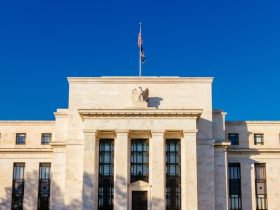Financial advisor John Robinson was scheduled to move his clients’ funds to
Charles Schwab
from TD Ameritrade over Labor Day weekend as part of the brokerage industry’s largest account migration ever. He expected a snoozefest; instead he says he experienced a “dumpster fire.”
A $1.7 million account was mistakenly assigned to him, and three of his client accounts totaling more than $4 million were incorrectly assigned to another advisor, he says. Robinson tried calling Schwab’s (ticker: SCHW) service desk but couldn’t get through. He finally spoke to someone the next day about the missing accounts. “They asked me, ‘What’s the account number?’” he says. “And I said, ‘I don’t know; I can’t see the accounts.’”
Four days later, the accounts were reassigned correctly, but the experience has left Robinson dispirited. Schwab might lose his business.
“It’s 50/50,” says Robinson, owner of Financial Planning Hawaii. “My great preference is I’d very much like to leave. I’m disappointed. This is not what I was expecting.”
Some Schwab customers may share the same sentiment, and Schwab investors may too, although for different reasons. The snags in the $1.3 trillion Labor Day transition have come amid a trying year for the company. The stock is down 35%, bank deposits had fallen 28% year over year as of Sept. 30, and net new assets tumbled in July and August as some Ameritrade customers and advisors took their business elsewhere.
“Schwab is at a crossroads,” says Michael Wong, an analyst at Morningstar. “There are a lot of potential positive and negative catalysts in the next two to six quarters.”
Rising interest rates over the past year have pressured Schwab’s bank, a key profit center. Customers have moved billions of dollars out of the company’s default low-interest bank accounts to higher-yielding options, a process known as “cash sorting.” Because bank deposit outflows have exceeded Schwab’s cash on hand, it has had to rely on costly short-term borrowing, which has caused its interest expenses to soar and taken a bite out of earnings.
Schwab’s third-quarter results, posted Oct. 16, were better than Wall Street’s forecast but still down sharply from a year ago. During the company’s earnings call, executives didn’t release a dramatic new business strategy or turnaround plan. Instead, they urged shareholders to be patient.
“Despite the environment, despite the noise, we are supremely confident in our positioning for long-term growth,” Schwab CEO Walt Bettinger said on the call.
Many analysts agree and remain bullish on Schwab’s downtrodden stock. That’s because cash sorting will likely end as interest rates level off, they say. Also, thanks to its acquisition of TD Ameritrade, Schwab has enormous scale and a commanding lead over the competition. Plus, Schwab dominates the business of holding assets for the clients of independent financial advisors. This space is difficult for newcomers to break into, even when there may be dissatisfied customers.
Schwab says that as far as the TD transition goes, all is well. The overwhelming majority of TD Ameritrade clients have transitioned to Schwab successfully, and attrition levels are lower than what Schwab had originally forecast. “Only a tiny fraction of transitioning clients reached out to us with a concern,” a Schwab spokeswoman said, adding that the company’s priority is to quickly resolve any customer issues.
As for Robinson, who oversees about $295 million in assets, he says his recently transferred clients are unhappy with Schwab so far, but he notes his options for moving client assets elsewhere as an independent advisor are extremely limited. “Where else can you go?”
Problems at a Profit Center
For decades, Schwab has been a leader in the discount brokerage industry and at the forefront of cutting costs for consumers. But the growth of Schwab’s bank, launched in 2003, has transformed the company. It made Schwab less reliant on trading revenue, allowing it to cut commissions to zero in 2019. That groundbreaking move forced its largest competitors, who were more reliant upon trading revenue, to follow suit. And then Schwab bought TD Ameritrade, giving a huge boost to Schwab’s businesses serving retail investors and independent financial advisors.
The growth of Schwab’s bank also explains why cash sorting among its customers has weighed so heavily on the company’s earnings and been of such concern to investors. In 2022, more than half of Schwab’s $20.8 billion in revenue came from net interest revenue, or the difference between the interest it earns on bonds and loans and the interest it pays on cash. As Barron’s observed four years ago: “The big profit center for Schwab is now its bank.”
The company sweeps clients’ uninvested cash into bank accounts that currently yield just 0.45%. But because interest rates have soared, Schwab’s customers have been moving cash to options such as money-market funds that yield more than 5%. In the past year, bank deposits have fallen by 28%, to $284 billion from $396 billion.
Schwab isn’t the only company being hit with cash-sorting woes, but it has been hit particularly hard. Among the top 15 companies holding bank deposits, Schwab reported the largest year-over-year decrease in deposits—31.1%—as of June 30, according to S&P Global Market Intelligence.
Often, the money doesn’t leave Schwab’s platform, but the company earns a lot less when investors move it from the sweep accounts into higher-yielding options. More troubling, when deposit outflows exceed the company’s cash on hand, it has to borrow funds to plug the gap, such as by issuing CDs or borrowing from the Federal Home Loan Banks. Net interest revenue for the third quarter fell 24% year over year to $2.2 billion, due to higher interest expenses. That hurts the top and bottom lines: Schwab revenue fell 16% to $4.6 billion, while adjusted net income dropped 31% to $1.5 billion.
Schwab executives say cash sorting is abating and point to a slowing pace of deposit outflows. Many analysts agree. First, a lot of investor cash that was more rate sensitive has already moved. Second, cash levels won’t go to zero because most investors keep some dry powder on hand. Third, the Federal Reserve is nearing the end of its rate increases.
Plus, Schwab doesn’t need to reverse the cash-sorting process to ease its pain. “You just need cash sorting to stop,” says Morningstar’s Wong. At that point, the company can stop relying on high-cost funding to cover deposit outflows, and that will relieve pressure on earnings.
Although many analysts are bullish on the stock, many investors have sold shares. Schwab’s stock trades around $54, well below its 52-week high of $86.63. Investors want to see clearer proof that cash sorting is over, says William Blair analyst Jeff Schmitt. “I think it’s a show-me story,” he says. “They have to see it to believe it.”
Schwab could stop cash sorting by raising the rate it pays on sweep accounts, which would delight the independent financial advisors it serves as well. Some advisors complain they have to regularly move client cash out of sweep accounts. But Schwab says clients are encouraged to seek higher-yielding options for their savings (and offers several). And, of course, raising the rate on sweep accounts would immediately dent earnings, so it is effectively off the table.
Tech Bugs and Longer Waits
After nearly three years of preparation, Schwab has devoted considerable resources this year to migrating TD Ameritrade customers to its platform. Over Labor Day weekend, Schwab moved more than 7,000 advisors and $1.3 trillion of client assets. Although some TD Ameritrade advisors left Schwab over the summer before the scheduled migration, most advisors stayed with Schwab for the Labor Day transition. Some say they now regret it.
Advisors complain of tech glitches and client data not transferring over properly. Tim Guthrie, founder of Bullseye Investment Management in Cincinnati, says he has had difficulty using a tool to rebalance client portfolios, TD Ameritrade’s iRebal, which Schwab said it would bring over to its platform. Among other issues, Guthrie says he discovered post-transition that iRebal couldn’t handle more than 500 trades at a time, whereas at TD, he routinely used it to do rebalancing involving more than 15,000 trades.
“We can still get everything done for clients; it just takes a lot more time, and clients also have to wait longer to see service requests completed, and they are complaining about it,” he says.
Schwab says it has addressed functionality issues and made improvements.
Some advisors say that Schwab’s technology and mobile app aren’t as user friendly as TD Ameritrade’s app was. Leslie Beck, owner of Compass Wealth Management in Rutherford, N.J., says her transition to Schwab’s platform went smoothly, but she finds the technology wanting. For instance, she’s unable to view, through Schwab’s advisor center, daily transactions across all of the 125 client accounts she oversees—a time-saving feature she previously had at Ameritrade.
“If a client wrote a check, if dividends were paid, I could see everything,” she says. “It was a way for me to check client activities. You cannot do that on Schwab. You have to go into every single individual account, all 125, and see what the transactions were.”
Advisor concerns extend beyond technology. For instance, some advisors say they weren’t informed that Schwab adds a $45 ticket charge on Vanguard purchases or sales of mutual funds, and that Schwab doesn’t permit monthly automated purchases or sales of Vanguard mutual funds. They say TD didn’t have the extra charge and allowed automated purchases. Schwab says advisors were informed.
To be sure, some advisors say their transition went smoothly. Ryan Kelly, CEO of Spectrum Asset Management, credits his staff’s preparation and Schwab’s resources for ensuring a trouble-free move. “It was effortless and easy for us, but we trained for it,” says Kelly, who oversees more than $650 million in Newport Beach, Calif.
Bernie Clark, head of advisor services at Schwab, says the company is focused on helping advisors get the most out of the platform, he says. The company rolled out an update to its advisor platform on Oct. 16 based on advisor feedback. “Did we get everything perfect? Absolutely not,” Clark says. “This is an evolving game, and we will continue to work hard to earn their business.”
Fewer Options Than Ever Before
For all the advisor gripes and hand wringing, Schwab doesn’t face an imminent threat of attrition—at least not in the short term. That’s because it’s a lot of work for independent advisors to transfer client accounts from one custodian to another. Such moves typically take months to plan and execute.
Robinson, the advisor who had missing accounts, says he is hesitant to put his staff through another transition after having just moved to Schwab from TD. “You don’t want to go from the frying pan into the fire,” he says.
Plus, advisors have few places to go. The custody market has consolidated into just a handful of firms. Schwab controlled an estimated 54% of registered investment advisor assets as of 2021, the most recently available figures from research firm Cerulli Associates. Its closest competitors, Fidelity and Bank of New York Mellon’s Pershing, had 22% and 5% of RIA assets, respectively.
There are new competitors entering the custody sector, including robo-advisor Betterment, start-up Altruist, and Goldman Sachs. But it has already taken years for those firms to make even small inroads into the custody business.
“It’s very hard to compete with Schwab because competitors don’t have the same scale,” says Alex Fitch, portfolio manager and director of U.S. research at Harris Associates. Fitch co-manages the Oakmark Select (OAKLX) and Oakmark Equity and Income (OAKBX) funds, both of which purchased shares in Schwab this year.
During the Oct. 16 earnings call, Schwab’s CEO said the company had performed well in the face of challenging conditions.
“I understand that the overall backdrop is decidedly negative and that, for some, it is easier to focus on the near-term challenges,” Bettinger said. “But I would encourage you to look at the entirety of our position.”
Customers continue to bring money to the firm, and Schwab operates in the fastest-growing segments of wealth management. Today Schwab has $7.82 trillion in assets, split between retail investors and independent financial advisors. The latter has been consistently growing as streams of advisors leave big brokerage firms such as Merrill Lynch to open their own independent wealth management firms.
Schwab’s growth plans include adding services for ultrahigh-net-worth clients (a lucrative demographic), expanding its banking and lending capabilities, and attracting more young investors. Schwab also intends to cut costs by laying off staff and closing some offices. Those moves may boost earnings next year.
Even with cash-sorting woes and some advisors’ frustrations with the TD Ameritrade transition, Schwab’s size and leadership status give it a big lead over its rivals.
“It’s difficult to imagine someone ousting Schwab from their dominant competitive position,” Harris Associates’ Fitch says.
Write to Andrew Welsch at andrew.welsch@barrons.com
Read the full article here













Leave a Reply